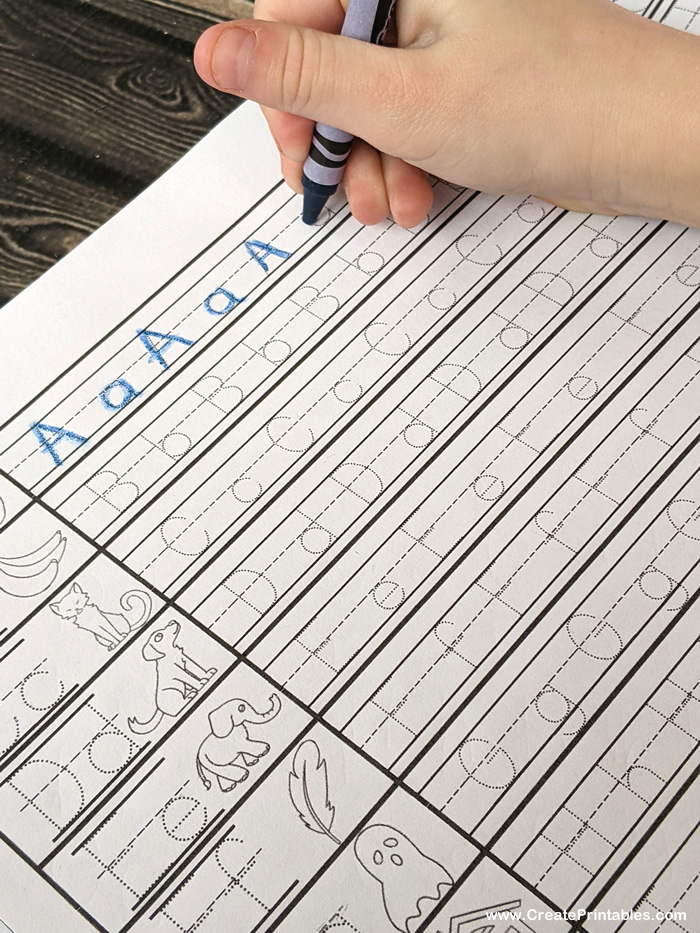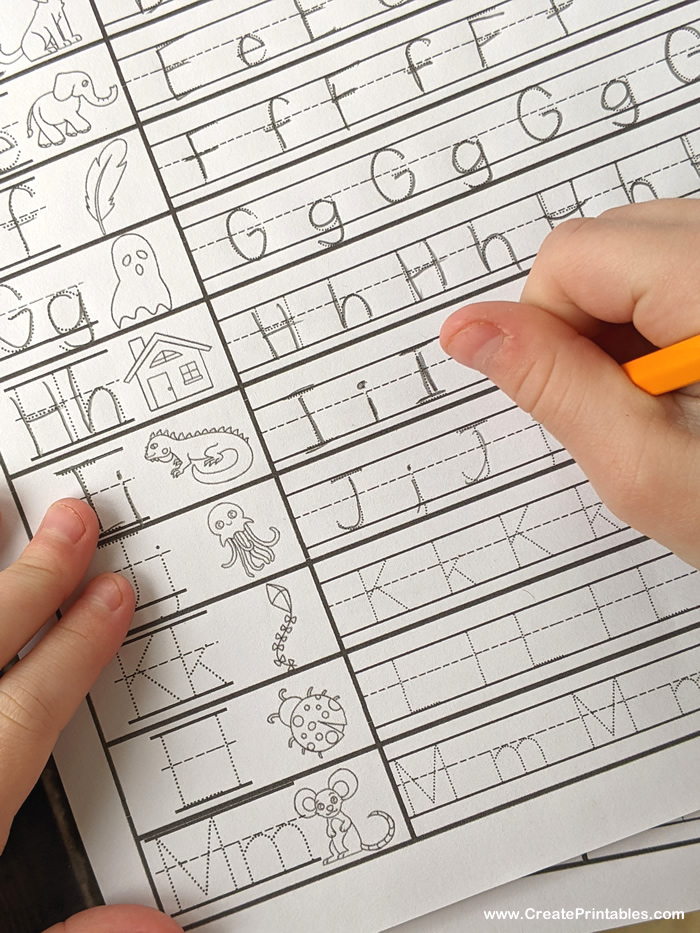Letter Tracing Worksheet Includes Phonetical Images
This letter tracing worksheet is great for working on letter formation as well as early phonics skills. Use the left hand chart to identify each letter sound, with the help of the pictures. The right hand side can be used for repetition.
Reading and writing are usually taught together because they’re linked, and worksheets like this one can help get your preschooler reading-ready or help your early reader practice their skills.

When Should I Use a Letter Tracing Worksheet With Pictures?
This worksheet is great for toddlers and preschoolers of almost any age. Once your child starts showing signs of reading and writing readiness (usually age 2-5) you can introduce this two page worksheet.
You’ll need to tailor your lessons based on your child’s abilities and interest, but by encouraging the skills in this letter tracing worksheet you can give your child a head start for kindergarten.
How to Use this Letter Tracing Worksheet for Reading
It’s popular in Montessori education to focus on teaching the letter sound before the actual letter name. So instead of saying the alphabet “A, B, C…” you would instead use the sounds /a/, /b/, /c/.
You can apply that to this chart by having your child identify each letter sound as you go down them on the left. You might have to help toddlers and preschoolers at first, but make sure you have them repeat the sound back to you.
Decoding
Depending on the child’s level, you can also use the pictures as a clue. If they can’t recall the letter sound, have them identify the drawing and enunciate the first letter.
This type of decoding is really important for early readers. Beginners are usually encouraged to look at a book’s pictures for clues to decode new words, and doing it now with letters will help build those skills.
Hopefully once your child hears the letter sound in the word it will click, but if not then you should help them to hear where the sound is present at the start of the word.
Being able to figure out the first letter sound is another way children decode words while reading. Once they start saying the first letter the rest of the word, if it’s familiar, will usually click.

Say and Write
Once the child is aware of the letter sound, have them trace the letter on the right. I like to have them say the sound out loud each time they trace it.
This will help connect the word in its written form to the way it sounds; which isn’t just great for learning to read but sounding out words while writing too.
A Great Letter Tracing Worksheet For Writing Practice
Of course, the concise, traceable lines of letter repetitions in this letter tracing worksheet also make it good for general writing practice too. For an extra challenge, have kids write each repetition in a different colour of pencil.
Colouring the small pictures is another way to build writing skills too. Writing relies heavily on coordination, grip, and muscles working together; and colouring builds these skills as well.
Trying to stay in the lines of such a small picture is tricky for young kids and it will give them a good writing “work out” without them even realizing.
